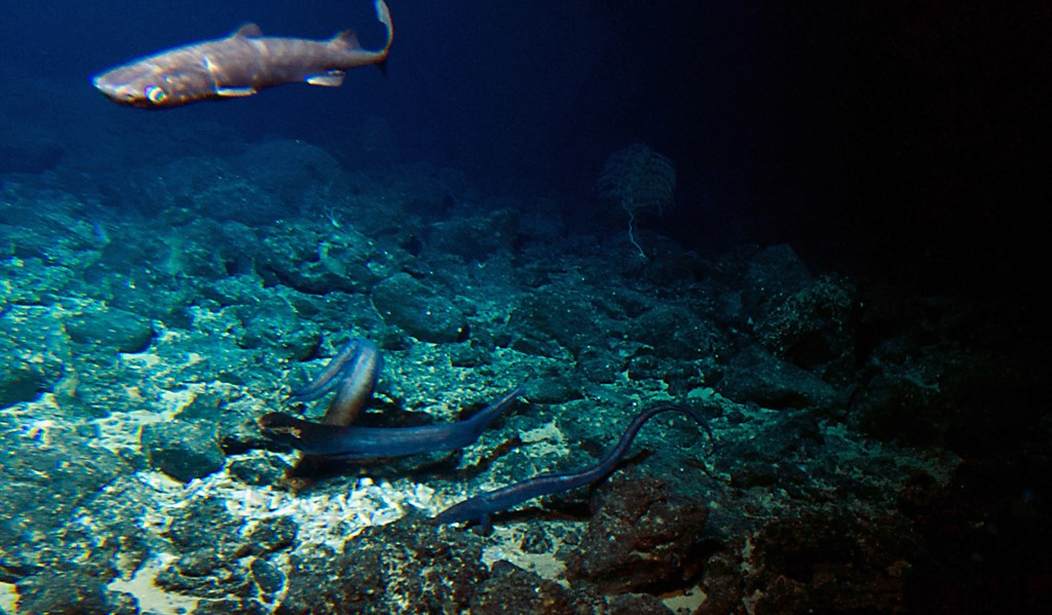Oceanographers working off the coast of Oregon have made a potentially alarming discovery. They’ve found a vent in the ocean floor that is pushing out warm water. On the surface, that may not sound all that remarkable or dangerous, but the chemical composition of the water suggests that it’s coming up from a deep vent and it’s located on top of the Cascadia Subduction Zone. We’ve covered this topic here in the past, but if you’re not familiar with the CSZ there are some good documentaries online where you can learn the details. The short version of the story is that the CSZ “slips” on a regular basis every 300 to 400 years. When it does, it causes an earthquake of at least magnitude 8 or 9. And very shortly after that, a tsunami that looks like nothing seen in our lifetimes comes ashore from southern Canada to northern California destroying everything in its path. This leaking vent in the seafloor could be an early indicator that the next slip is on the way.
The Cascadia Subduction Zone (CSZ) is a massive fault line stretching from Vancouver Island to Northern California—and it’s the source of the vast majority of earthquakes and tsunamis in the region. In fact, scientists believe that the fault line will likely be the source of the next Big One, an anticipated megathrust earthquake so powerful it’ll wreak death and destruction the likes of which we’ve never seen before from a geological event.
So, it goes without saying that researchers have a special interest in studying the CSZ—and they may have uncovered something that could clue us in on what’s going on with the incredibly powerful ticking time bomb.
Here’s a short video of the vent taken by an underwater drone.
The last CSZ quake happened in January of 1700. The Native Americans still talked of it in their oral traditions and told the first European settlers arriving in the region about it. The death toll was horrific, though there was very little in the way of construction to be destroyed in the region at the time. It’s a given that another one is coming and we’re already in the window of time when it would typically happen.
The question is, what are we supposed to do with this information? We’ve known this is coming for quite a while now and back in 2016 officials were conducting emergency evacuation drills in Oregon to try to prepare for it. But there’s only so much you can do, realistically. Scientists believe that from the time the fault slips and the earthquake hits, it will be as little as 30 minutes before the wave hits. There are three-quarters of a million people in Seattle. There are nearly as many in Portland. You simply can’t evacuate that many people in half an hour, particularly when they’re already scrambling through the wreckage of a category 9 earthquake.
This is one of those problems that just seems so big that nobody wants to deal with it so they just go about their business. A few years ago, Oregon began building a new ocean studies center on the coast, right in the center of the danger zone. (If this happens, they’ll have plenty of ocean to study, if only for a few moments.) Asking everyone in the northwest to move fifty miles inland is also not seen as being feasible. Who will invest that kind of money and resources for something that might not happen for another hundred years or more?
The problem is, we don’t know exactly when this is coming, but it’s still coming without a shadow of a doubt. And when it does, the death toll could easily be in the tens or even hundreds of thousands. Of course, it’s still possible that the vent that’s been discovered in the ocean floor is fairly normal and we just hadn’t seen one before. If that’s the case everyone in the Northwest might be fine in this lifetime. But their children or their grandchildren won’t be fine. Sadly, I have no workable solution to offer other than suggesting people might want to consider moving now.







Join the conversation as a VIP Member